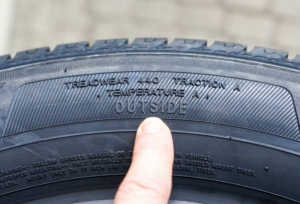Tire maintenance is vital for safety and performance, particularly in changing weather. Hot weather can lead to overinflated tires, causing uneven wear and blowout risks. Cold weather can decrease tire pressure, affecting traction. If you’re wondering where to find used tractor free tires near me, it’s worth considering as an option for budget-conscious individuals. Regularly check and adjust tire pressure, following cold weather recommendations. Proper tread depth is essential for icy or snowy conditions. By maintaining pressure, checking tread depth, and inspecting for wear, drivers ensure tire performance in varying weather conditions.
Types Of Speed And Load Rating
This paragraph will discuss the types of speed and load rating and their impact on tires. Speed rating refers to the maximum speed at which a tire can safely operate, as determined by tire manufacturers. Load rating, Indicates the maximum weight that a tire can support when properly inflated.
Load rating, Indicates the maximum weight that a tire can support when properly inflated.
Both speed and load rating are important factors to consider when selecting tires, as exceeding these limits can lead to tire failure and compromise vehicle safety.
Speed Rating
Speed rating is a crucial factor to consider when choosing tires as it directly influences the safety and performance of a vehicle, evoking a sense of responsibility and caution in the audience.
Speed rating refers to the maximum speed at which a tire can safely operate. It is denoted by a letter code, ranging from Q (up to 99 mph) to Y (over 186 mph). The speed rating is determined through rigorous testing procedures conducted by tire manufacturers, ensuring that the tire can withstand the specified speed without compromising its integrity.
The speed rating of a tire is important because it indicates the tire’s ability to dissipate heat and maintain its structural integrity at high speeds. Tires that are not designed to handle high speeds experience excessive heat buildup, which can lead to tire failure and loss of control. Therefore, selecting a tire with an appropriate speed rating is essential for the safety of both the driver and passengers.
Load Rating
Load rating is a crucial aspect to consider when selecting tires, as it directly influences the weight-carrying capacity and durability of the tire, ensuring optimal performance and safety on the road.
The load rating of a tire indicates the maximum weight that the tire can safely carry at a specified inflation pressure. It is represented by a numerical code on the sidewall of the tire, which corresponds to a specific weight capacity. This rating is determined through rigorous testing conducted by tire manufacturers to determine the tire’s ability to handle different loads.
The load rating of a tire is particularly important for vehicles that carry heavy loads, such as trucks, SUVs, and vans. Overloading a tire can lead to excessive heat buildup, increased tread wear, and even tire failure, which can be extremely dangerous.
By selecting tires with an appropriate load rating for the vehicle and the intended usage, drivers can ensure that the tires can handle the weight they will be carrying without compromising safety or performance. It is essential to consult the vehicle’s owner’s manual or consult with a professional to determine the appropriate load rating for a vehicle.
It is important to note that the load rating of a tire should never be exceeded, as it can result in catastrophic tire failure and potential accidents on the road.
Related Links: All About Tire Tread Patterns and Their Effects
Effects Of Speed And Load Rating On Tires
This paragraph will discuss the advantages and disadvantages of proper speed and load rating on tires. Proper speed and load rating on tires have several advantages. Firstly, it ensures optimal performance and handling of the vehicle, as tires that are rated for higher speeds and loads are designed to withstand the demands of such conditions. Secondly, it enhances safety by reducing the risk of tire failure, blowouts, and accidents.
Improper speed and load rating can have several disadvantages. It can lead to excessive wear and tear on the tires, reducing their lifespan and requiring frequent replacements. It can compromise the stability and control of the vehicle, increasing the risk of accidents and injuries.
Advantages Of Proper Speed And Load Rating
One benefit of ensuring proper speed and load ratings on tires is the increased safety and stability they provide on the road. When tires are matched with the correct speed rating, they are designed to withstand the forces generated at high speeds. This means that they are less likely to experience excessive heat buildup, which can lead to tread separation, blowouts, and loss of control.
Tires with the correct load rating are able to support the weight of the vehicle and its cargo without being overloaded. Overloading tires can cause them to overheat and wear out more quickly, compromising their performance and putting the driver at risk.
Proper speed and load ratings also contribute to optimal handling and maneuverability of the vehicle. Tires that are designed to handle the speed and weight requirements of a vehicle can provide better traction, grip, and responsiveness. This is particularly important in emergency situations where quick and precise maneuvers are necessary to avoid accidents.
Disadvantages Of Improper Speed And Load Rating
Improper speed and load ratings on tires can result in compromised safety and stability, increased risk of accidents, and diminished handling and maneuverability.
One of the main disadvantages of using tires with incorrect speed and load ratings is compromised safety. Tires have specific speed ratings that indicate the maximum speed at which they can safely operate. When tires are used at speeds higher than their recommended rating, they overheat and become more prone to blowouts or failures. This can lead to sudden loss of control and accidents, posing a significant risk to the driver, passengers, and other road users.
How to Choose Proper Speed And Load Rating?
When choosing the proper speed and load rating for tires, there are several factors that need to be considered. These include the type of vehicle, the intended use of the vehicle, and the driving conditions. It is important to select the right speed and load rating to ensure the safety and performance of the tires.
It is important to select the right speed and load rating to ensure the safety and performance of the tires.
To make the right choice, it is advisable to consult the manufacturer’s guidelines and recommendations, as well as seek professional advice if necessary.
Factors To Consider When Choosing Speed And Load Rating
To make an informed decision about speed and load rating, it is important to consider various factors. One of the key factors to consider is the type of vehicle you have. Different vehicles have different weight capacities and performance requirements. For example, a heavy-duty truck that is used for hauling heavy loads will require tires with a higher load rating compared to a small sedan. Similarly, sports cars that are designed for high-speed performance will require tires with a higher speed rating. Therefore, it is crucial to understand the specific requirements of your vehicle and choose tires that are capable of handling the weight and speed demands.
Another important factor to consider when choosing speed and load rating is the type of road conditions you will be driving on. If you frequently drive on rough or unpaved roads, you will need tires that are capable of withstanding the additional stress and strain. In such cases, it is recommended to choose tires with a higher load rating to ensure they can handle the bumps and impacts associated with off-road driving.
Tips For Selecting The Right Speed And Load Rating
Consideration of various factors is important in order to select the appropriate speed and load ratings for your vehicle’s tires.
Firstly, it is crucial to understand the specific requirements of your vehicle and the conditions under which it will be operated.
The speed rating of a tire indicates the maximum speed at which it can safely operate, while the load rating indicates the maximum weight that a tire can support.
It is essential to choose tires with speed and load ratings that align with the capabilities of your vehicle and the intended usage.
Failing to do so can result in compromised safety and performance.
Explore Related Posts: How To Care Your Tire In Different Weather Conditions?
Conclusion
In conclusion, tire speed and load ratings are vital for performance and safety. Choosing the right ratings for your vehicle based on factors like weight and usage is crucial. Consult your owner’s manual or a tire professional to ensure a match. This decision directly impacts tire performance, safety, and durability.
